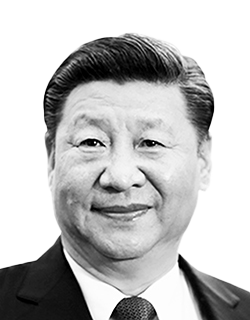The Chinese economic power players making decisions that will impact the world
Beijing is reshuffling its economic leadership team after the ruling Communist Party held its twice-a-decade national congress in October. There are changes to the top party groups that make decisions on economic affairs, as well as in the State Council, China’s cabinet, and to the line-up of key ministers and regional leaders of the nation’s economic powerhouses. These are the current and new faces.
Head of the Central Financial and Economic Affairs Commission

Incumbent
Xi Jinping
Age
Gender
Male
Ethnicity
Han
Position
Education
PhD in Marxist theory and political education
Home province
Shaanxi
State Council
The State Council – China’s cabinet, led by the premier and vice-premiers – is the highest executive office in the government system, and is primarily responsible for the country’s economic and financial policies. Other key areas such as the military and security are handled by Communist Party organs.

Click on the faces to see the profiles
Age
Gender
Ethnicity
Position
Education
Home province
Key ministries
A handful of ministries and bodies under the State Council handle China’s economic, financial and industry policies. Some cover a wide range of areas while others are focused on specific industries. The state sector, a major player in the country’s economy, also has bodies and companies that are either directly under or affiliated with the State Council.

Click on the faces to see the profiles
Age
Gender
Ethnicity
Position
Education
Home province
Key regions
Greater Bay Area
Greater Bay Area
Beijing has a grand plan to integrate Hong Kong and Macau with nine cities in the southern province of Guangdong – Guangzhou, Shenzhen, Zhuhai, Foshan, Zhongshan, Dongguan, Huizhou, Jiangmen and Zhaoqing. It wants to turn the area into a world-class economic and innovation hub that will produce more than 10 per cent of China's GDP and 20 per cent of the country’s exports.

Click on the faces to see the profiles
Bohai Economic Rim
Bohai Economic Rim
The Bohai Economic Rim includes the area surrounding the Bohai Sea in northern China, is home to 18 per cent of the country's population and accounts for 20 per cent of its GDP. It is a traditional heavy industry and manufacturing centre – from aviation to logistics, shipping, cars, electronics and petrochemicals.

Click on the faces to see the profiles
Yangtze River Delta
Yangtze River Delta
The Yangtze River Delta comprises Shanghai and the provinces of Jiangsu and Zhejiang in the east, and Anhui in the southeast. It is home to 15 per cent of China’s population and contributes around a quarter of the country’s GDP and more than a third of its foreign trade and investment.

Click on the faces to see the profiles
Sichuan-Chongqing region
Sichuan-Chongqing region
The Chengdu-Chongqing Economic Circle has a GDP of more than 7 trillion yuan (US$1.01 trillion) and is a hub for the huge market in the hinterland of China’s southwestern region.

Click on the faces to see the profiles
Beijing
Age
Gender
Ethnicity
Position
Education
Home province / Hometown
Associate Creative Director Marcelo Duhalde
Graphcis by Han Huang and
Marcelo Duhalde
Reporting by William Zheng and
Siqi Ji
Edited by Jun Mai
Photo editing by Kevin Wong
Additional work by Jintian Yan